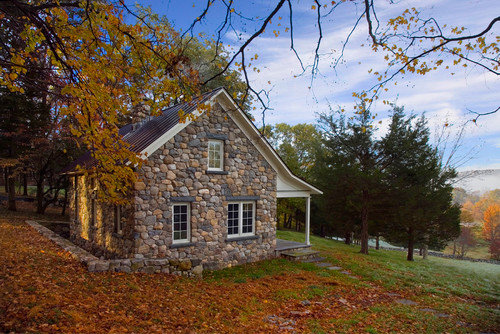There are many things you can do with leaves after you’ve raked and piled them up (and let the kids jump in them a few times, of course). You can stash them in a hidden corner of your yard and forget about them. You can burn them. Or, you can bag them up and put the bags on a curb to be picked up by a city services truck.
But anyone interested in sustainability, gardening or environmentally friendly living would never miss an opportunity to use carbon-rich leaves in order to better their soil and benefit their landscape.
In addition to an increased awareness of the environmental benefits of composting, this gardening practice has become even more popular in many areas throughout the U.S. thanks to new laws that prohibit the dumping of leaves and clippings into landfills.

There are three basic ingredients required to start a compost pile: Browns, greens and water. Browns refer to materials like dead leaves, twigs and branches. Greens include grass clippings, vegetable scraps, fruit scraps and coffee grounds. Your compost pile will need equal parts browns and greens. Check out the EPA’s list of What to Compost for more guidance.
When starting a compost pile, we suggest creating a bin-like structure five or six feet in diameter with simple chicken wire. Pile your greens and browns using a layering technique, making sure to keep it moist by watering along the way. The moisture levels must be just right, as your compost can’t be too wet or too dry.
But composting is more than creating a pile and letting it decompose on its own. You have to regularly maintain your compost pile to ensure it is active and thriving. In addition to being watered, compost piles need to be turned once or twice a month. By springtime, you’ll have a healthy additive to combine with your soil to help plants grow healthy and strong.
If you would like a worksheet about “The Leaf Pile” please save your spot at http//www.landscapeyourlife.com
Will you add leaves to your compost bin this fall? Leave a comment below to share with us!
Are you interested in a master plan for your garden or perhaps a tune-up? Let the specialists at Dargan Landscape Architects help you get started with your next project. We’ll nurture your landscape and heal the earth while also beautifying your property. Let us help you hear Nature speak as we Heal the Earth one Garden at a Time!